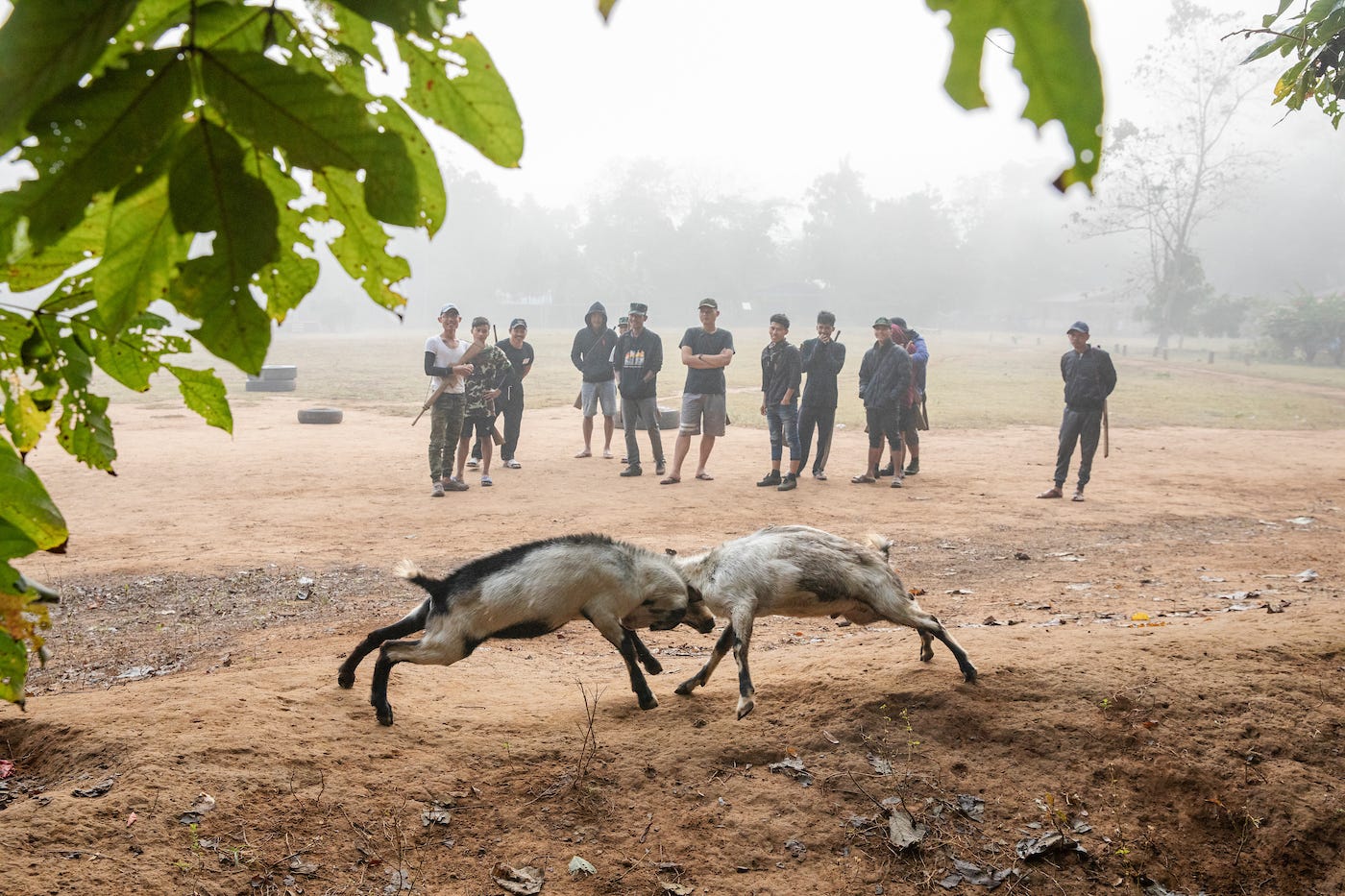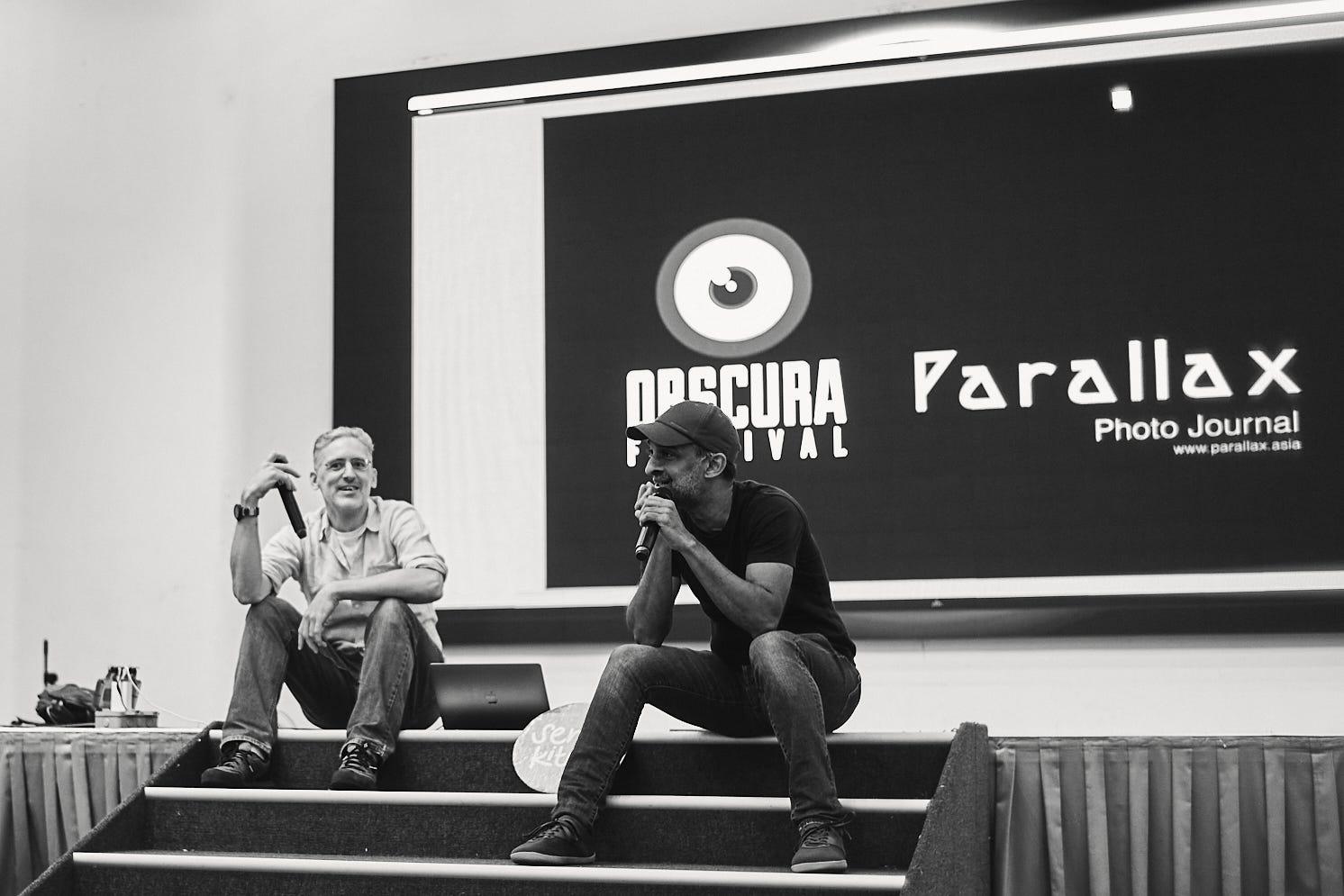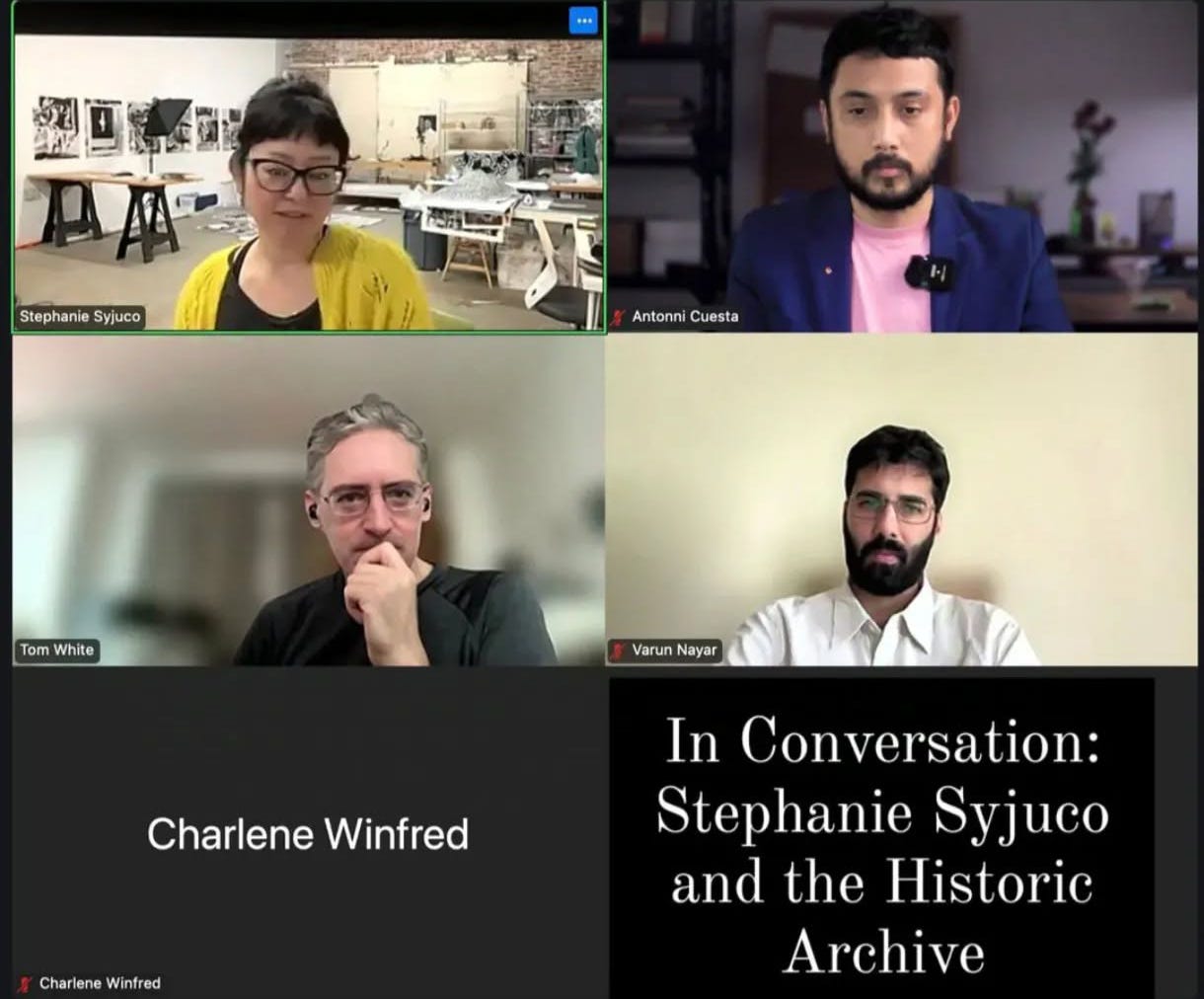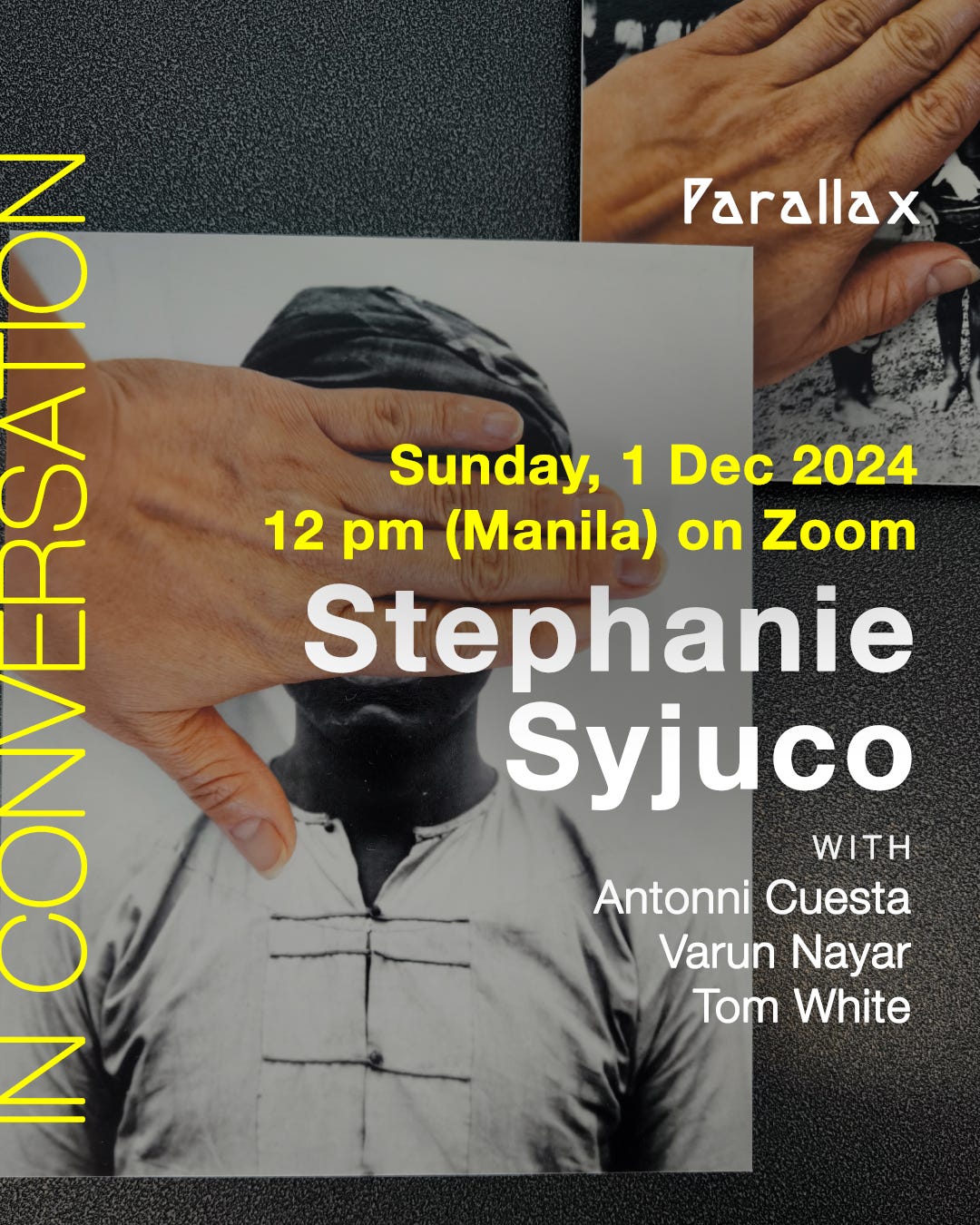And that’s a wrap for ‘24!
We did a bunch of things in 2024! Also, our chat with Stephanie Syjuco left me wondering about what stories the internet will tell about us in the future
2024’s been an eventful year — global climate records smashed (again), the US elections, the second grim anniversary of the Russia-Ukraine war, a devastating year’s milestone in the Israel-Gaza war, which has killed over 45,000 and injured well over a hundred thousand as I write this, all while humanitarian aid into the region continues to plummet…while four thousand are killed, and a million or more displaced in Lebanon. The global economy, shaken by the COVID years, continues to be destabilised by new technologies, uncertainty, and unrest. People are turning inwards, socially and politically.
There’ve been some big life changes in our team this year. Matt moved to Scotland with his family 🏴 Tom started school again to become a scientist 🤓 I got a new bicycle and am happily in the throes of a midlife crisis 🚲 Oh and we also migrated the Parallax website to Wordpress, which was a bigger project than I thought… major props to my friend Faith, who handled it all like a pro, while I “project managed.”
What did we do in 2024?

Our mission has always been to support the existing community of image makers in telling important stories from their communities.
We published 10 such stories from photographers in the region, including 6 feature pieces from the SACCA collective documenting the military coup in Myanmar.
We hosted an evening on AI at Objectifs in Singapore where Matt chatted about the implications of machine intelligence on art and creativity with Aik Beng Chia and Sharmain Lim.
We partnered with Photography Chismis PH on a Feature Grant for their special publication, Insights: Issue Two. Stephanie Syjuco’s essay Object Number 2022.24.1, was awarded that grant.
We had an online conversation with Stephanie, Toni Cuesta (the man behind Insights), and Varun Nayer, who wrote a review of Stephanie’s book The Unruly Archive for ArtReview, where we discussed how to talk back to the historic archive.
Tom hopped over to Kuching with Vignes Balasingam of Obscura Festival for HAUS KCH’s Seni Kita storytelling weekend. He and Vig spoke about the communities at the heart of both Parallax and Obscura, met up with local creatives and reviewed portfolios. We’re looking forward to more of these collaborations in future.

What’s coming in 2025?
As the world turns inwards, we’re looking to do the opposite — redoubling our efforts to connect with photographic communities across Southeast Asia and beyond. Our mission is more important than ever: to amplify the voices of those who live the critical stories that need to be told.
Next year (mere days away 😱) we’re looking to start a series of collaborative conversations on photojournalism and documentary. Other collaborations are in the works as well. Stay tuned!
In Conversation with Stephanie Syjuco
For those of you who attended our conversation with Stephanie Syjuco, our Insights grant recipient, thank you for coming along! Here’s a recap of the highlights.
Stephanie revealed her motivation was to break down the implied narrative of Filipinos who had been photographed for the 1904 St. Louis World Fair. She writes about the fair’s Philippine Village, “a type of ethnographic ‘human zoo’ that actively displayed over 1200 imported Filipinos in an unfaithful recreation of ritual and tribal spectacle.” Her work investigates the broader context to these colonial era images, and highlights the destructiveness of the American imperial perspective on colonised Filipinos.
The archive as an evolving collection of mutable histories was our theme for this conversation. Because history is never just what we remember, it’s also how we remember. In the last newsletter, I referenced Chimamanda Adichie’s TED talk, “the danger of a single story.” As Stephanie demonstrates in The Unruly Archive, there are so many other stories found not only in archival material, but also its organisation — what has and has not been labelled, described, tagged, or otherwise catalogued. She says:
“There's the notion that archives or collections are these fixed repositories. That somehow history happened, and then all these documents and images and things related to history wound up in a kind of space that could get held for other people to pull from, and make connections with, or even prove things.
And so when I first started looking at the American Archive, it was just so obvious that the viewpoint of what was being kind of curated into that archive was so narrow.
...So much being left out, or not organized properly, or even not keyworded in a way to make things found easily, was so fascinating. Because no matter what's in there, there's obviously a kind of curatorial vision of how it’s to be accessed. And so after spending, I think, almost a month in the Smithsonian Archives, going in and searching around every day, it really became apparent to me that the Philippines wasn't missing from the US archive. It just hadn't been properly identified in it.
…If we just framed these images differently, they actually could say something quite exciting. So maybe the idea of talking back to an archive is a way to keep it still alive.”
In many ways, institutional curations are about turning history into one cogent story. But other stories abound, overflowing with life’s textures, with many of these refusing to fit neatly into accepted narratives. This is potentially a headache for some artists, archivists and curators, but a boon for others looking to explore the depth of our shared history.

Varun touched on the oft-overlooked physical production of historical photographs; the frequently overlooked physical and economic labour involved, especially in an era where photography required many more hands to help with equipment, processing and printing. All of this required space, chemicals, labour and other capital. Who had access to these resources? How did that embed their point of view (or not) into an archive’s larger narrative?
In the process of looking into colonial archives, Stephanie—who is based in the USA—related her experience of visiting the Manila Chronicles archives, and how it broadened her appreciation of the Philippines’ historiography through photographs:
“...a complete 180 existed when I started looking at the archives in the Philippines. Because then, I spent time looking at the archives of the Manila Chronicle, which is a newspaper that had been shut down during the start of martial law in 1972 by the first Marcos administration.
…It was this amazing look at how Filipino photo journalists were documenting not just the politics of their time, but also the fashion, the culture, the kind of cosmopolitan, global, world of the Philippines. So seeing that, after seeing this narrow colonial-era, ethnographic, frozen archive in the United States, it's like those two contrasting visions.”
Toni then brought up the question of identity, referencing a memorable line in Stephanie’s essay: “I do not make work about Filipino identity, I make work about the white gaze, and those are two totally different things.”
He said “Diaspora works are usually nationalised. They assign a specific essence of a country or a nation state to it...which is not necessarily a bad thing, but I think it tends to essentialise something, which I think is partly contradictory even to the work.”
Toni was speaking about this in the context of the Philippines, but it is certainly not the only nation keen to claim artists working with narratives adjacent to its own. For diaspora, whose lives and identities are context reliant, this raises a quandary. The answer to the question “is this a [insert nationality here] work?” is rarely a hard “yes” or “no.” For diaspora, home—physically, culturally, historically, aspirationally—is located across different longitudes, latitudes and time frames.
Stephanie deftly conveyed this by saying:
“What is so Filipino about Stephanie Syjuco or the work? So I guess I would say that I identify as Filipino-American, and also Filipino to a certain extent. I was born there as a Filipino citizen until I was 26 years old. I have family there, and all that. But claiming the diaspora [is something] which many of us do in different ways.
Whatever home country is supposed to be, many of us are not located there anymore, and have created adoptive communities, connected with other diasporic folks. And so I would challenge the Philippines to actually see itself as much larger than the actual physical territory it inhabits. Because the truth is, it's also exported so many people for different reasons. Through labour or migration, it's a much bigger country than just its own small territory. So that's a plus in many ways, and it also can expand and complicate the definition of ‘Filipino.’
But I do have to say though, that as an adult, going back to the Philippines to make work and work with other artists, and to immerse myself in the Filipino community, or the creative community, it's only enriched my outlook on things.”
Stephanie has developed a course for UC Berkeley—where she teaches—called Art and the Archive, marrying the artistic process with research discipline and as the clock ran out on our conversation we all agreed that we’d like to explore these ideas further… more on this in a second round perhaps!
Parting thoughts
There were a multitude of perspectives in this conversation, across the disciplines of photographer, artist, academic, editor, curator, archivist. Our panelists have all worn these hats at some point in their careers. Listening to the discussion on the many ways in which we think, work, interpret and draw from archives, I wonder how this plays out for the rest of us. We don’t all work deeply with archives or historical materials the way Stephanie, Varun and Toni do. In our day-to-day lives, we may not mull the malleable histories of the media we encounter, or put much thought into archiving our lives.
But we do record our lives on a variety of digital platforms, every single day.
How will we think about our own histories in the next decade or century? What stories have we chosen to tell? What stories have we chosen to silence? Who are we allowing to define our histories and identities? And what stories do these choices tell about who we are, across the ages?
— Charlene
☕️ Keep us going?
We know times are tight for many, but if everyone who receives this newsletter contributed $1 a month - that’s $12 a year - to our coffee pot, that would cover the honorariums we pay to each photographer featured here. If you can afford it, please buy us a coffee or 3 and help keep things free for those that can’t.
[Caffeinate Team Parallax! ☕️ https://buymeacoffee.com/parallax.asia ]
We run this as volunteers, so your contribution goes directly to supporting the photographers we feature. Thank you!
Spread the word
Help us amplify Southeast Asian voices by forwarding this newsletter or sending your favourite story to a friend or three. Word of mouth matters, so this really does help!



